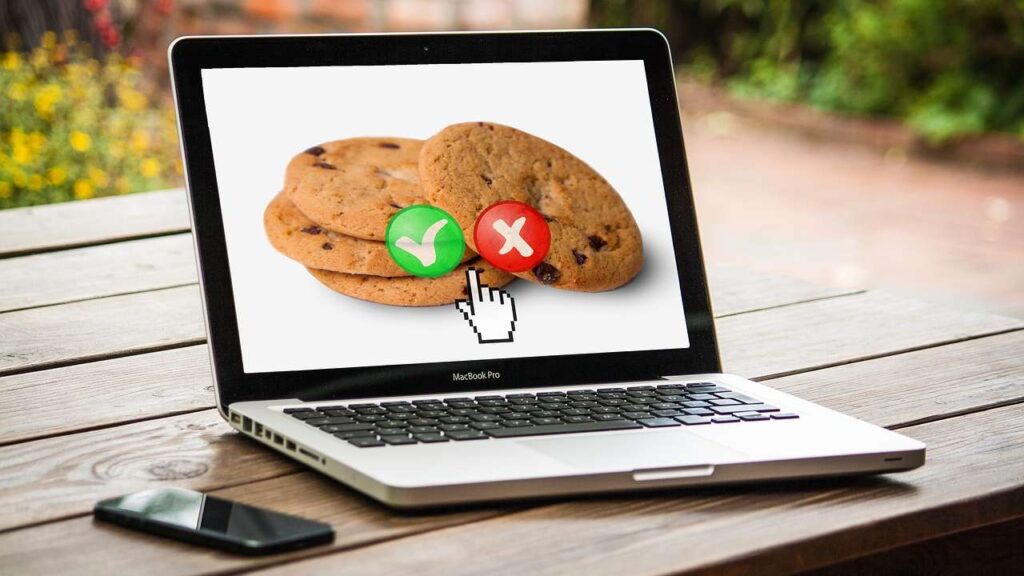Insights
Cookieless Tracking – How To Prepare
January 29, 2024
Written by:
Earlier this month Google disabled cookies for 1% of their Chrome browser users, migrating them into the Google Privacy Sandbox, with the ultimate aim of phasing out third-party cookies for all Chrome users by the end of 2024.
Why is this important? It is essentially their first step towards a “cookieless future” and acknowledges that, if you haven’t already, you need to start thinking about cookieless tracking and how to prepare for it.
In this blog post we have provided an overview of what web cookies and cookieless tracking are, and how we can prepare and use cookieless tracking moving forward.
What Are Web Cookies?
A website cookie is a small file that is stored on a user’s device by a website. It contains information about the user’s interaction with the website and is used to enhance the user’s browsing experience by allowing the website to remember the user’s preferences and activities.
For example, you can have types of Analytics cookies which collect things like demographic and browser/device information around people using your site. Advertising cookies can report back to various advertising platforms on how users have behaved on your website after visiting from an ad.
What Are First-Party and Third-Party Cookies?
A first-party cookie is a cookie which has been created by the site that a user is visiting. They’re often used to track a user’s journey on a site, As standard, first-party cookies are enabled in all browsers.
A third-party cookie is one created not by the site you’re visiting, but by somebody else. This is quite common in advertising, as sites other than the domain might be tracking activity (such as Google Ads or the Facebook Pixel).
How Do Different Browsers Deal With Third-Party Cookies?
Over the last few years, in accordance with the EU cookie directive, web browsers have started to limit and then block third-party cookies by default. In Safari and Firefox, third-party cookies are blocked by default. Google have advised that the Chrome browser will have fully blocked cookies by default by the end of 2024. However, users can already update their own browser settings to allow or deny cookies, for example by using Ad blocker extensions to block cookies.
What Is Cookieless Tracking?
If the user doesn’t accept cookies, you are not able to track their individual behaviour on a website, whether that be through Google Analytics, or tracking their clicks through Paid Search listings or a Facebook promoted post. This is where cookieless tracking comes in.
Cookieless tracking is a way to track what users do on a website without using cookies. It uses other data collection methods such as:
- IP addresses – collecting initial location information on a device.
- Fingerprinting – collecting various attributes from a user’s device, such as browser type, screen resolution, operating system, and installed plugins.
- First-party data – collecting information directly from users with their explicit consent.
- Anonymous event tracking – tracking the number of times a particular event occurs on the site (such as form submits, or pages accessed) without attributing these to an individual.
How Can GA4 Deal With Cookieless Tracking?
If users don’t accept statistics or analytics cookies, there are 2 potential ways to continue tracking user activity in GA4.
- Data Modeling.
- GA4 uses machine learning to track user behaviour and preferences by analysing data from various sources, such as server logs, device and network information, even when cookies are not available.
- It can identify patterns in the data to make predictions about future behaviour and provide insights and analytics, through its modelled data source. However, this is not available on all GA4 properties due to certain prerequisites with website traffic volume and having a consent management platform (CMP) already in place.
- The use of Google’s Consent Mode will allow marketers and advertisers to capture top-level data where users have not accepted cookies. If you have an existing CMP implemented through Google Tag Manager (GTM), Consent Mode can be easily set up in GTM.
- Server-side tracking.
- With server-side tracking, a user’s data is sent to a server-side container, which then translates the data into the appropriate format and sends it to the GA4 measurement protocol.
- This approach allows you to track user behaviour without relying on cookies or client-side tracking.
- However, this does require advanced technical knowledge and Development resources to set up, and will incur costs for server hosting and the Google Cloud Platform.
- It should be noted that the GTM server-side container can also be used to set up the Facebook Conversion API (CAPI), so server-side tracking can be beneficial across advertising platforms too.
What Non-Google Tracking Solutions Are Available For Cookieless Tracking?
With these tracking limitations considered, you may have a business need to source a cookieless tracking solution, so that you can be more confident in the volumes of data you can track from all users, regardless of whether they have accepted or denied cookies.
There are a number of non-Google cookie tracking solutions available to track user engagement on websites. Whilst the standard version of Google Analytics 4 (GA4) is free, cookieless solutions do incur costs to obtain such user data. For example, Plausible and Fathom are both simple to use and low-cost cookieless analytics platforms, which would allow you to generate top-level reports, such as engagement metrics, traffic sources, conversions and funnel visualisation.
————
If you have any more questions about cookieless tracking, setting up consent mode for your GA4 tracking or would like more information about non-Google cookieless solutions – please get in touch so we can chat about how Uplift can help you or your business.
WRITTEN BY
Joe Marshall
HEAD OF UX




